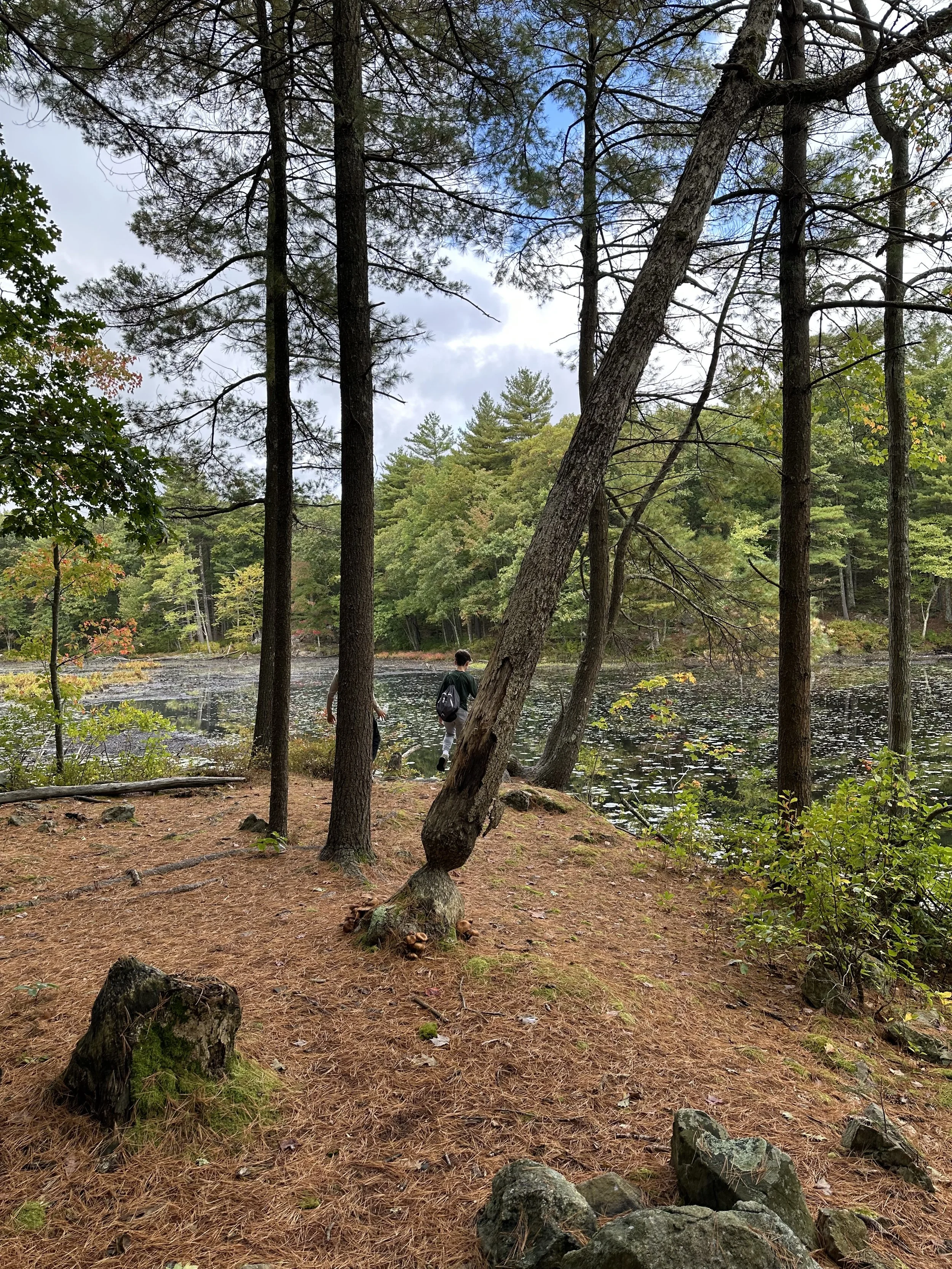HAROLD PARKER STATE FOREST
A vast forest including 11 ponds and 56 miles of trails used by hikers, bikers, equestrians, fishermen and more.
SUGGESTED WALKS
The forest has an extensive network of trails. Wide, straight fire roads crisscrossing the forest are great for walking and cross-country skiing. Narrower, winding, single-track trails are popular with mountain bikers, but are also great for hiking.
Many intersections are marked with numbered sign posts which correspond to numbers on the map. North Andover intersections begin with NA, Andover with A and North Reading with NR.
A unique feature here is Berry Pond Rd, about a mile of paved road closed to motorized traffic. The road runs from Berry Pond on Middleton Rd in North Andover to the parking area on Jenkins Rd in Andover, and is a great route for young bikers and families with strollers.
An ADA-accessible stone dust path called the Healthy Heart Trail runs from the pavilion on Middleton Rd to a junction with Berry Pond Rd.
Harold Parker’s many scenic ponds make great hiking destinations. From the parking areas on Middleton Rd, explore Sudden Pond for a shorter hike, or Salem Pond for a longer hike.
Harold Parker is also the home to the Berry Pond day-use area, and the popular Lorraine Park Campground. The closest campground to Boston, it features 85 campsites, boating, fishing and a swimming area. Refer to the DCR website for details on Berry Pond and campground dates of operation.
FLORA AND FAUNA
The forest has a tremendous variety of habitats, including over 100 certified vernal pools. The pools provide a habitat for the rare blue-spotted salamander. After spending most of the year underground, salamanders come to these temporary ponds in the spring to breed.
A recent North Andover Trails vernal pool exploration turned up spotted turtles, painted turtles, water scorpions, giant water bugs, fairy shrimp, wood frogs and tadpoles. Trees felled by beavers can be found around just about every pond, and dams and beaver lodges are a common sight.
The Department of Conservation and Recreation has managed Harold Parker for forestry since its early beginnings. The large straight stands of red pine found along many trails were planted in the 1930s but were never harvested. Pine was chosen for its resistance to pests such as gypsy moth caterpillars.
HISTORY
After being logged extensively around the turn of the century, Harold Parker State Forest was acquired by the Commonwealth between 1916 and 1934 from dozens of pasture and woodlot owners under a provision authorizing the purchase of “waste” woodlands at a rate “not exceeding an average cost of five dollars per acre”. It was one of the first state forests, and was named in honor of the state’s first Chairman of the State Forest Commission, who died in 1916. Reforestation began immediately. In 1930, the Department of Conservation employed “emergency unemployment crews” of 30 to 80 men, who worked to plant trees, build roads and combat gypsy moths. Beginning in 1933, the Civilian Conservation Corps, a federal jobs program, had two camps here. Thousands of CCC workers planted pine plantations, and built many of the man-made ponds, dams and park structures that remain to this day. The young men lived in barracks and earned $1 a day, most of which could be sent home to family.
Of the eleven ponds at Harold Parker, nine are man-made. Bear Pond and Berry Pond are natural kettle hole ponds. Up until 1983 the series of man-made ponds and spillways in Andover were used as a fish hatchery. All of the ponds are now open to fishing and boating, and Berry Pond continues to be stocked with trout.




